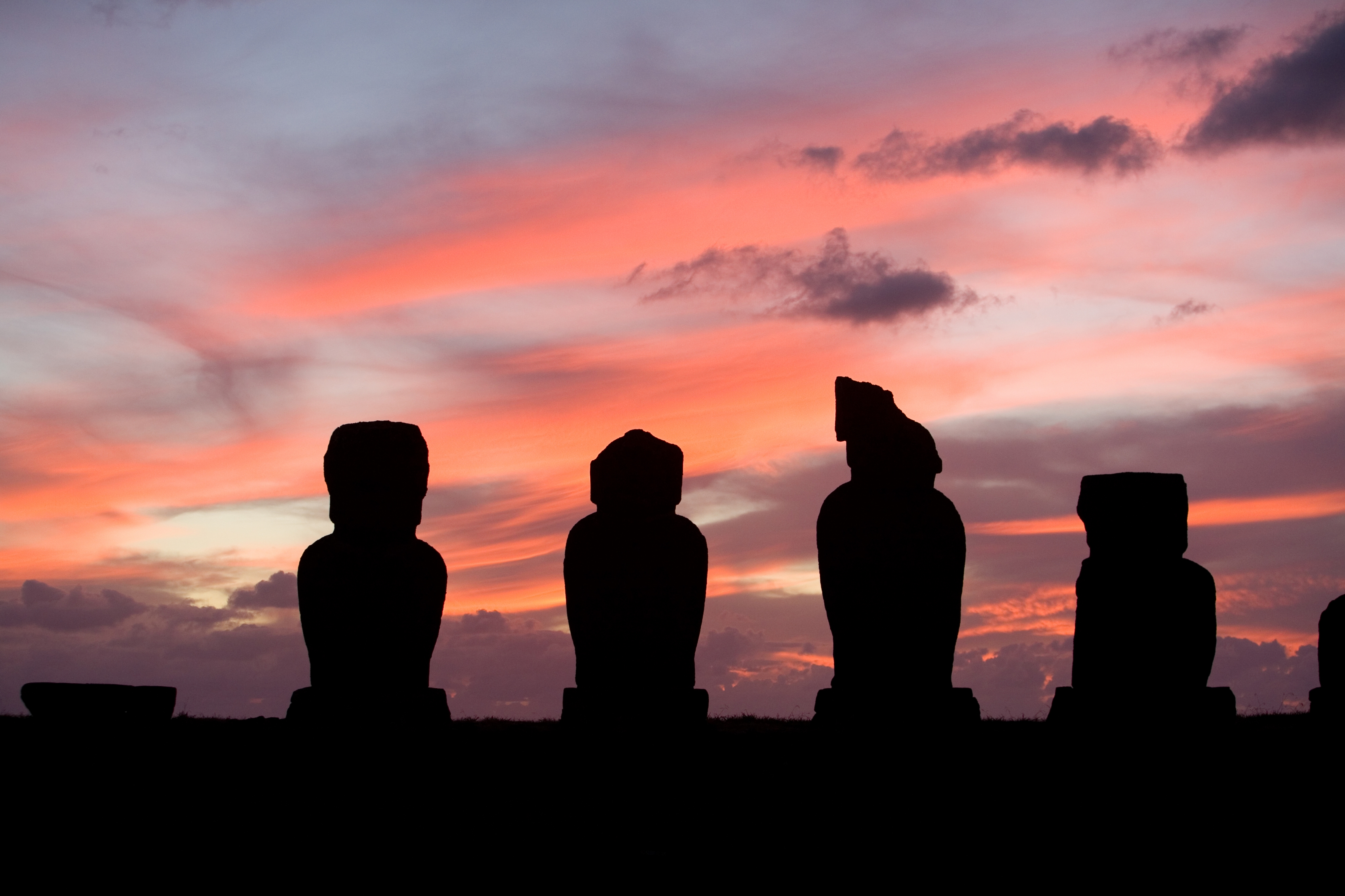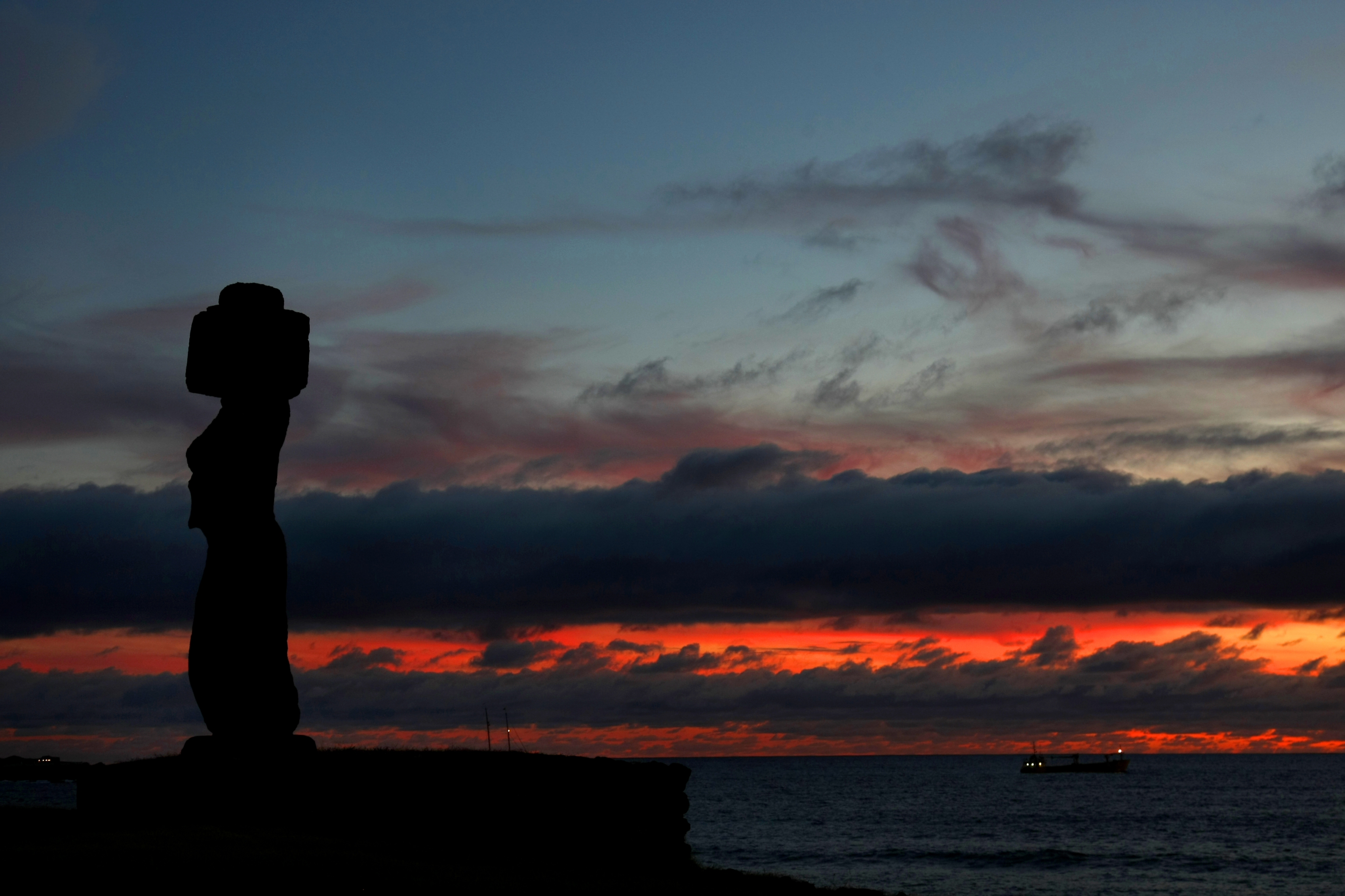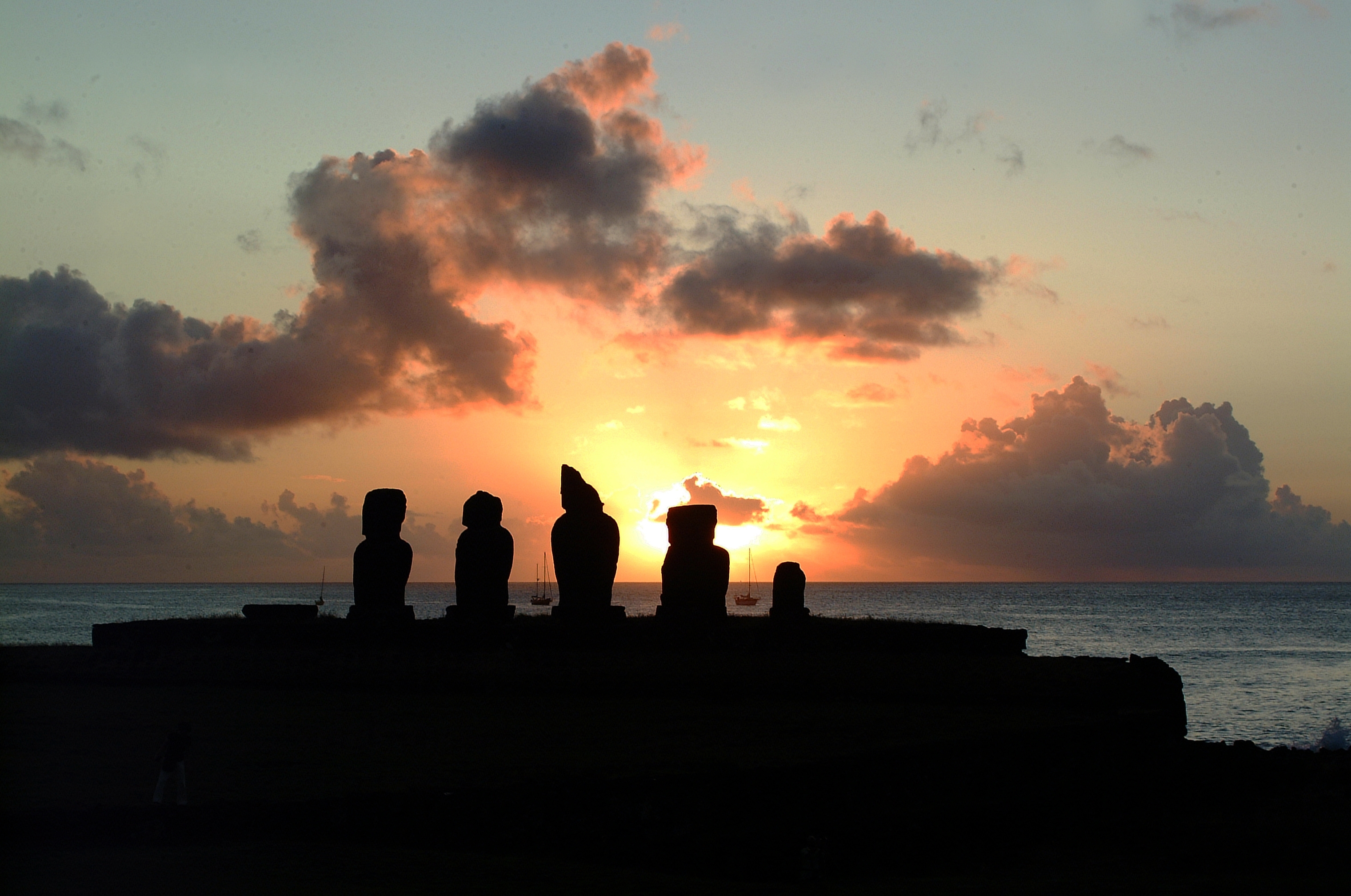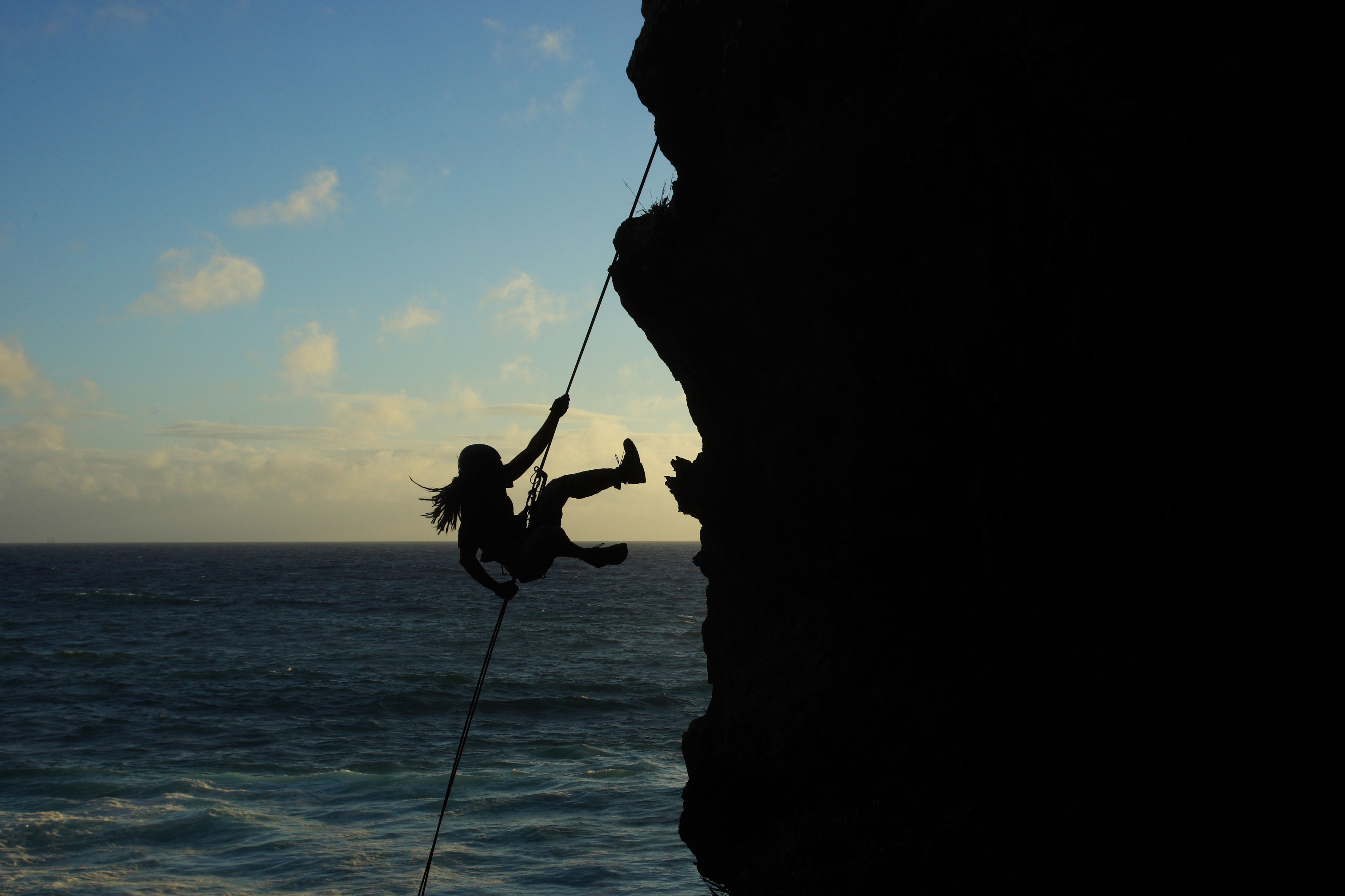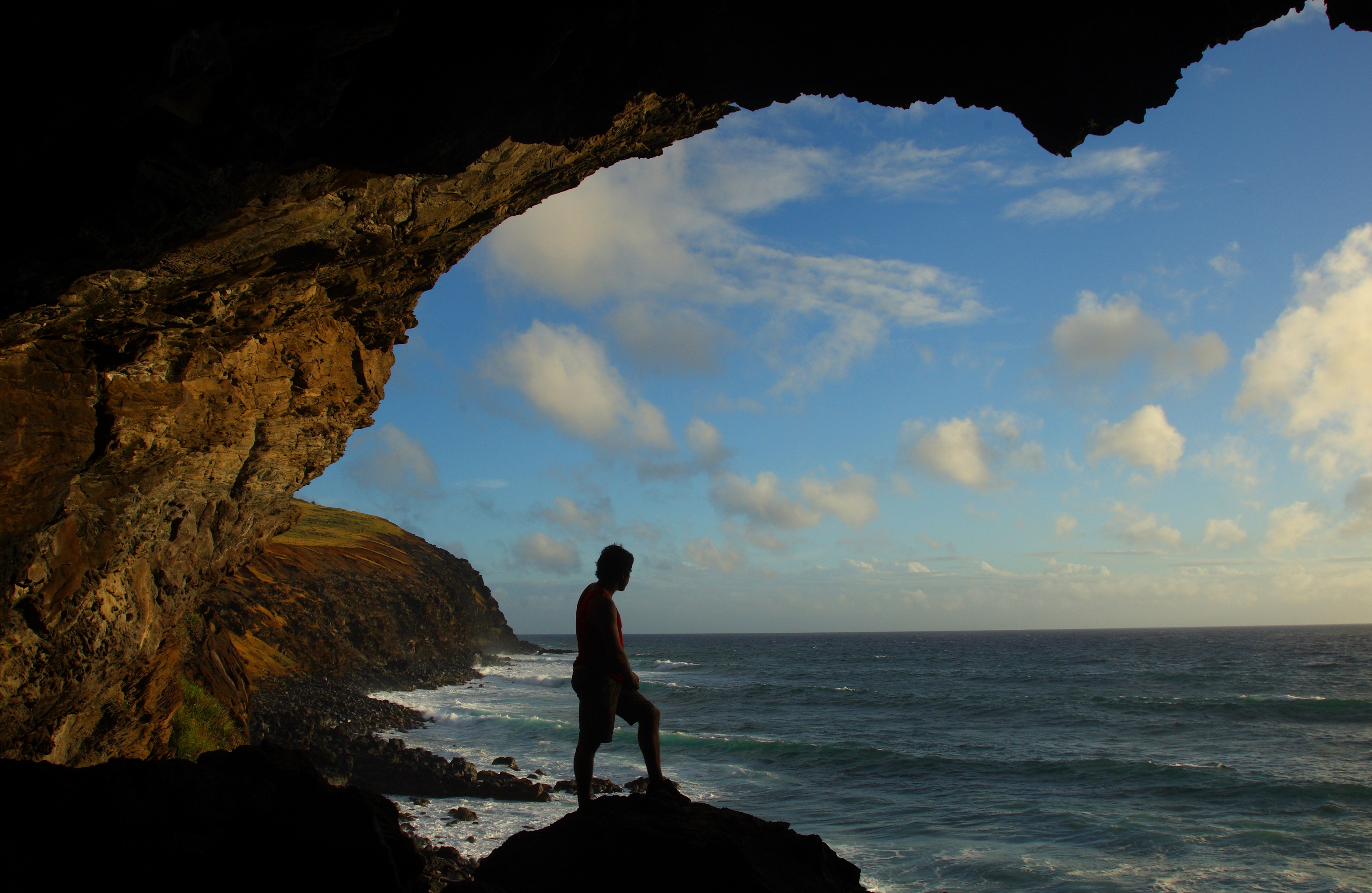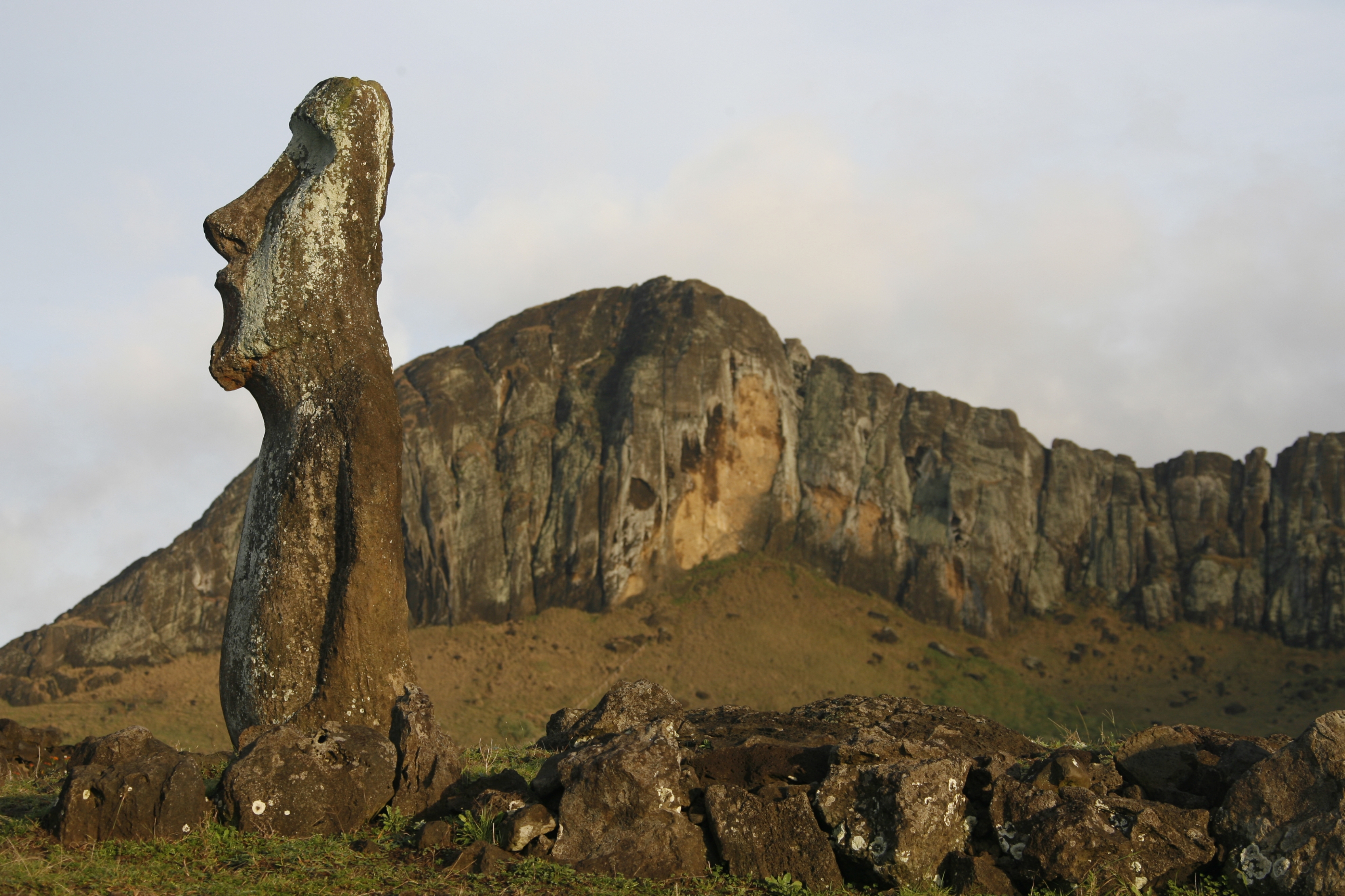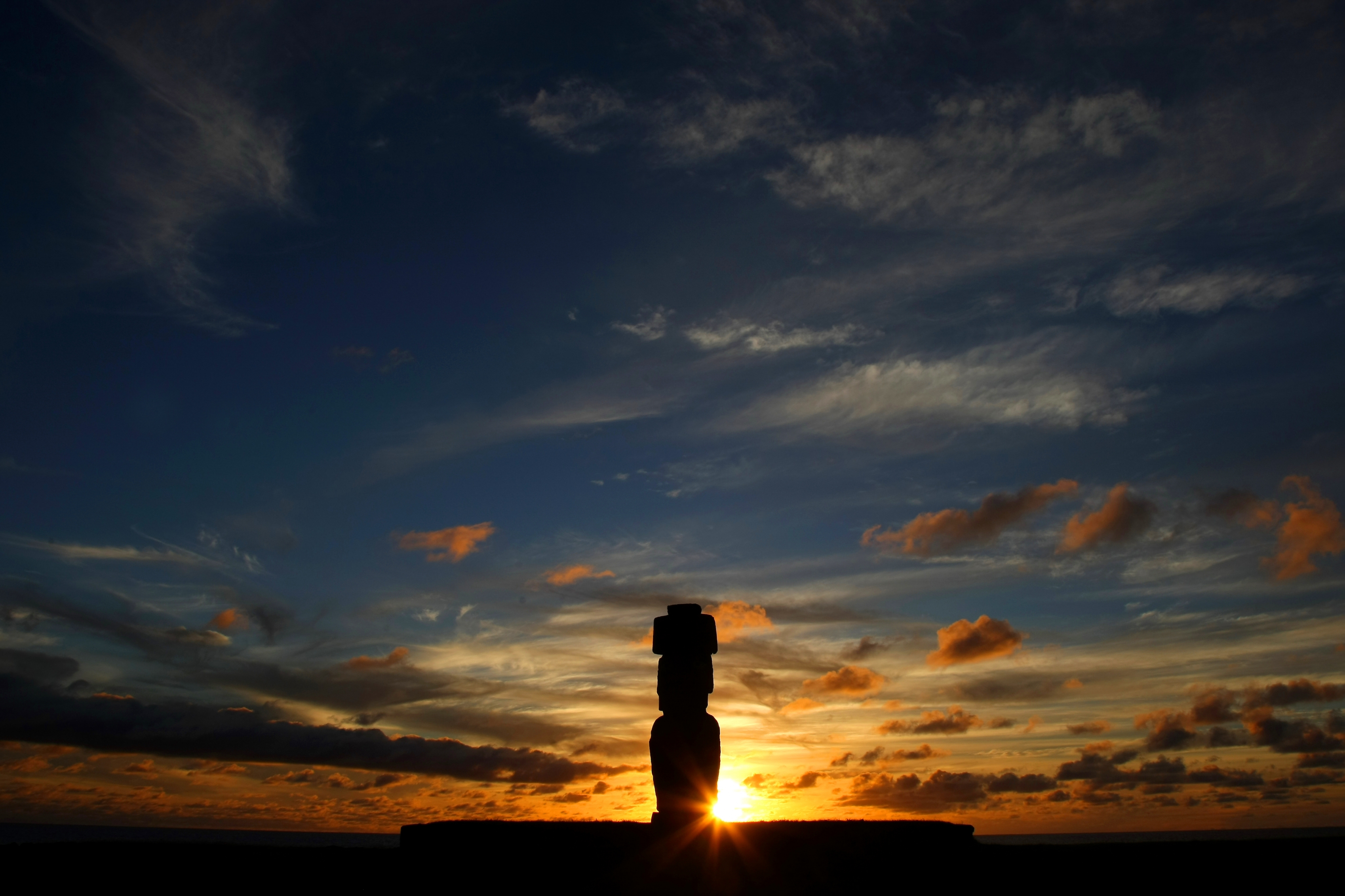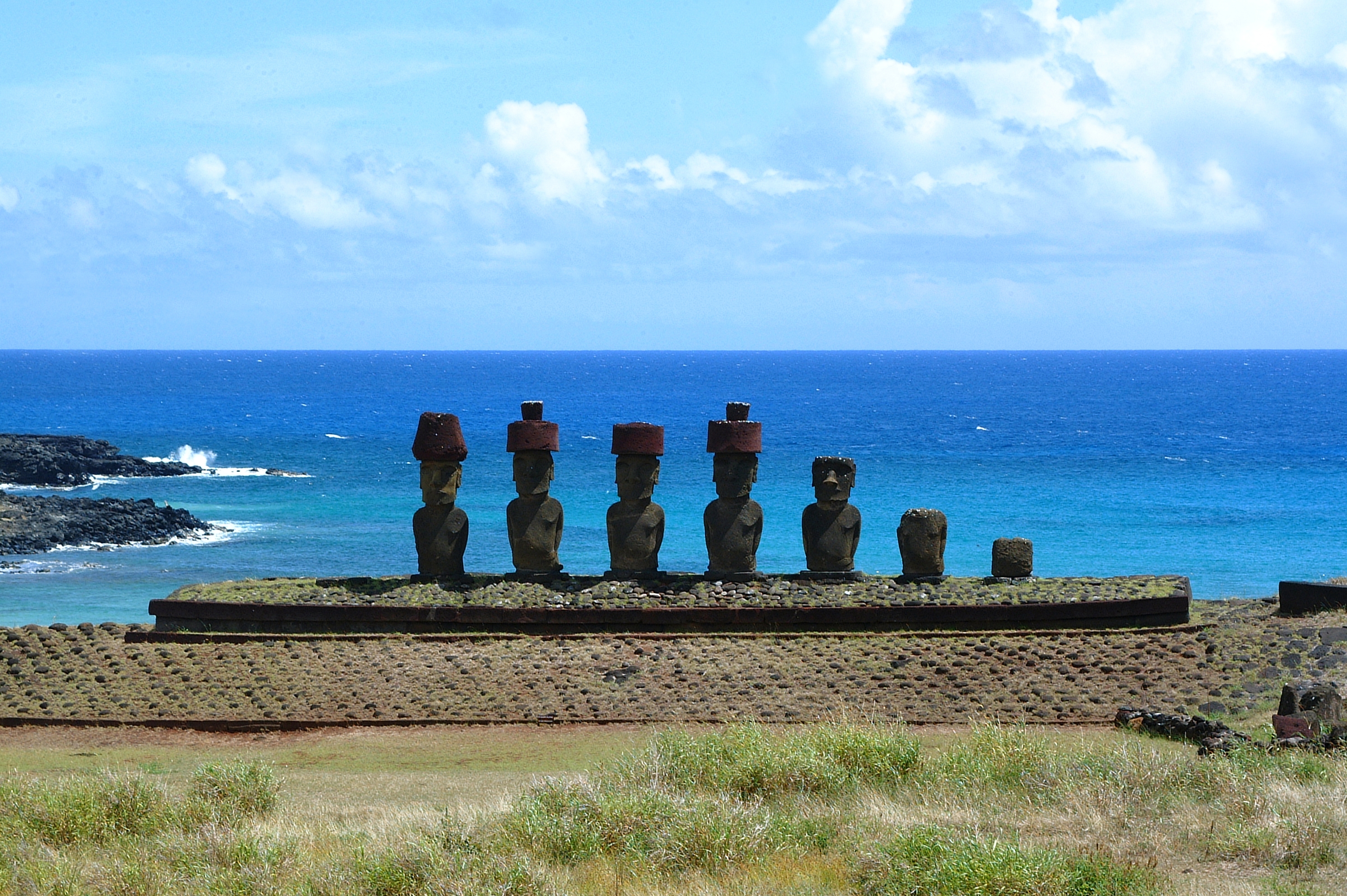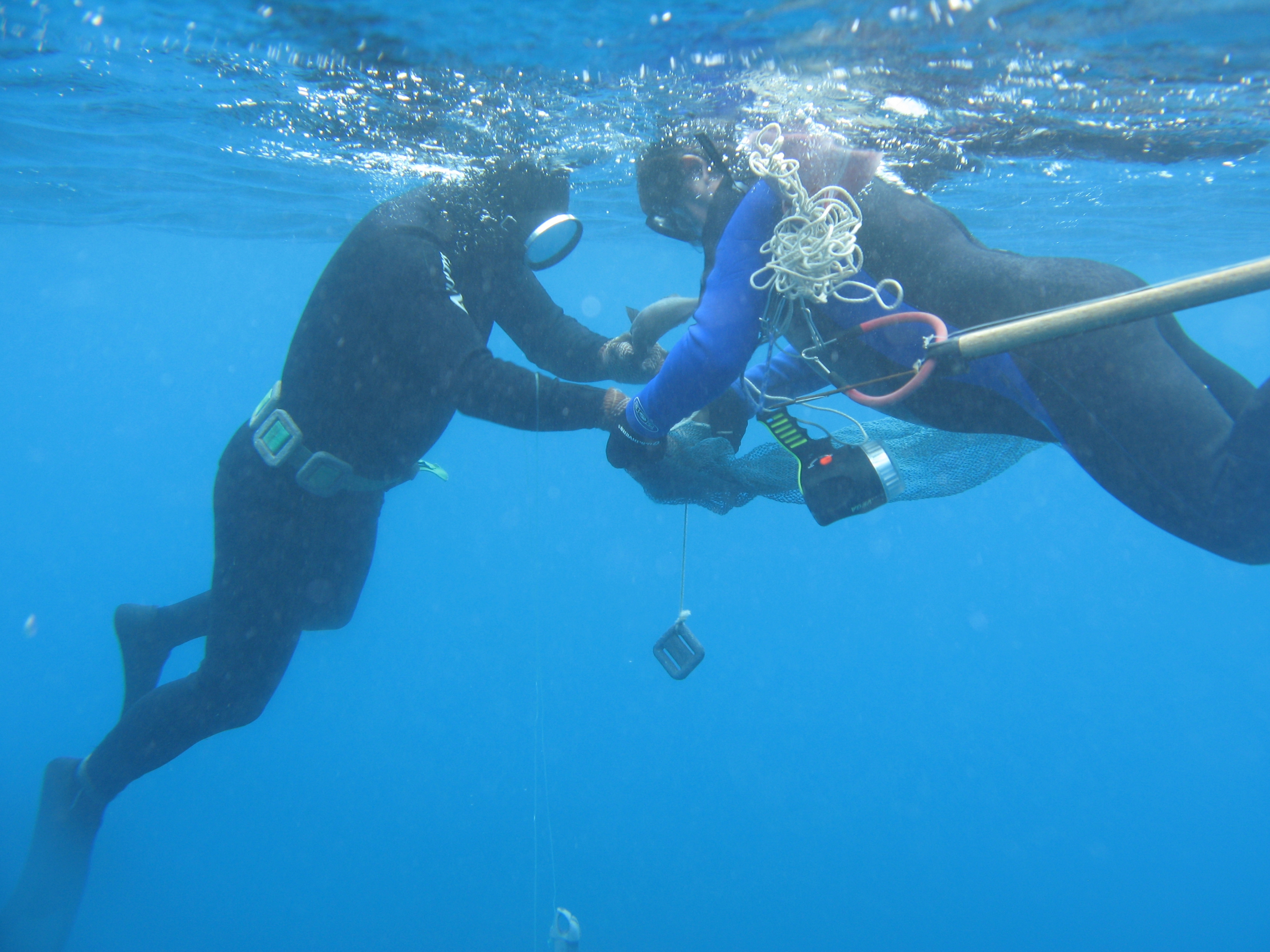WHERE TO GO IN EASTER ISLAND
Between beaches, archaeological sites and natural places, Easter Island surprises and enchants with its many attractions.
Anakena:
This wonderful beach with white sands and turquoise waters, is located 18 kilometers from the capital of Rapa Nui, Hanga Roa. It is the only beach on the island officially fit for bathing. It also has palm trees that were brought from Tahiti during the 60s, giving it a charming atmosphere.
In addition to swimming, scuba diving and other water activities, in Anakena you can relax in one of the kiosks and enjoy a beer and a delicious cheese or tuna empanada.
Near Anakena is the famous AhuNauNau.
AhuNauNau:
This is one of the best conditioned ceremonial platforms found on Easter Island. It is characterized by its Moais decorated with red caps. The statues of this ahu were restored in the late 70's, so they are well maintained and in have great detail, such as tattoos and clothing.
AhuTongariki:
This is one of the most beautiful places on Easter Island. With 15 Moais lined up, the largest quantity of these statues found in order in Rapa Nui and one of the postcards of the this place.
Hanga Roa:
This is the downtown area of Easter Island where you can find banks, supermarkets, shops, craft shops, car rentals, hotels and tourist information. Its main avenue, Poicarpo Toro, has all the necessary amenities for visitors, in addition to many culinary offers and options to taste the local flavors.
You cannot fail to visit Hanga Roa, where several diving schools, cafeterias and restaurants are located. It also features a Craft Fair where you can find many different elements worked by craftsmen, with a Polynesian Style.
It also is worth knowing the Parroquia Santa Cruz (Santa Cruz Parish), where Sunday Mass with a Rapa Nui style of singing is celebrated.
RanoKau:
El RanoKau is located in the southwest tip of Easter Island and has an altitude of 324 meters above sea level. It has a large crater where a lagoon of about 250 feet deep is located. Also, it is identified for its impressive cliffs that allow a view of the landscape of Rapa Nui. On the western side we find the ceremonial village of Orongo.
Orongo:
It is an important archaeological site on the island, which was used as a ceremonial center at the base of the volcano RanoKau. It has 50 stone houses, located in a sort of underground cave-like structure. This was a place where the priests stayed to perform rites such as the Bird Man. In Orongo you can see Moais and petroglyphs.
RanoRaraku:
This volcano is located in the northwestern tip of Hanga Roa. Here is the location of the open quarry where the Easter Island Moais were carved in their entirety and 400 Moais in different forms, shapes and sizes were left unfinished. It is a mysterious place where questions arise about how these huge statues were transported, since they weighed several tons.
It has also a crater where you can find a lake of totora.
MaungaTerevaka:
This is the highest volcano in Easter Island, 511 meters above sea level. It is located on the northern tip of Rapa Nui and has several craters. El RanoAroi is the most important and is on the southern part of the summit. On its slopes are several caverns, including the Cueva de Los Platanos, famous for its steep overlooking cliffs. It also has some ceremonial ahu, but of difficult access.
Museo Antropológico Sebastián Englert:
In this museum we can find a collection of objects and materials that compile the customs and traditions of the indigenous people of Easter Island. It was created with objects that the priest Sebastian Englert was able to collect, who lived 30 years in the area.
It is located north of Hanga Roa and near the ceremonial center of Tahai.
AhuTahai:
This is the place on Easter Island where you can see the best sunsets. Here are two ceremonial platforms, one with 5 Moais and the other with a single statue, with the sea at its back.
The lone Moai, named Ko Te Riku, has a bun made from a red stone and is the only one throughout the island with coral eyes.
In Tahai there is also a pier, built entirely of stone.
The AhuTahai is located 10 minutes walking distance from the center of Hanga Roa, north of the island.
